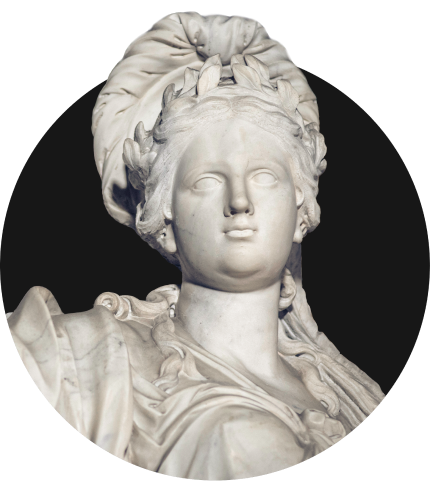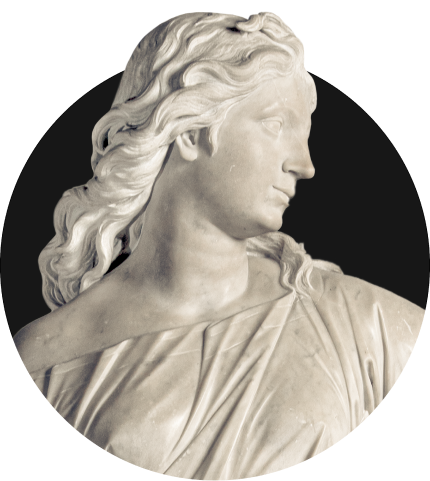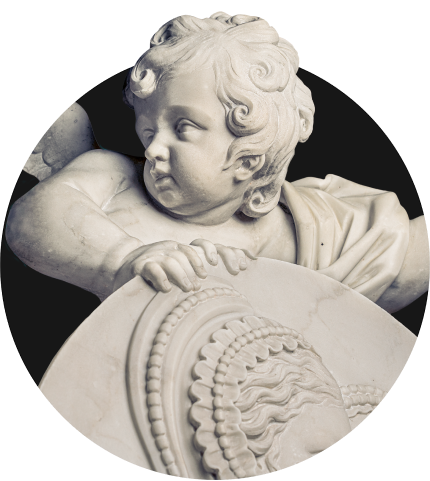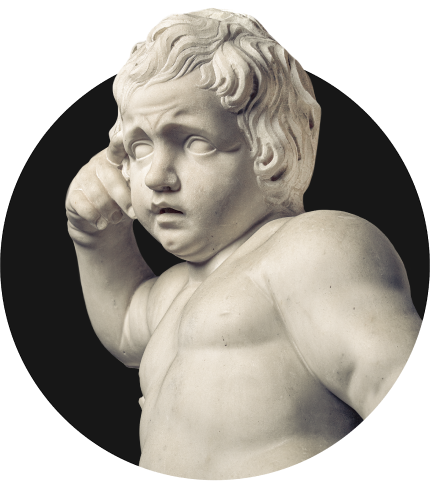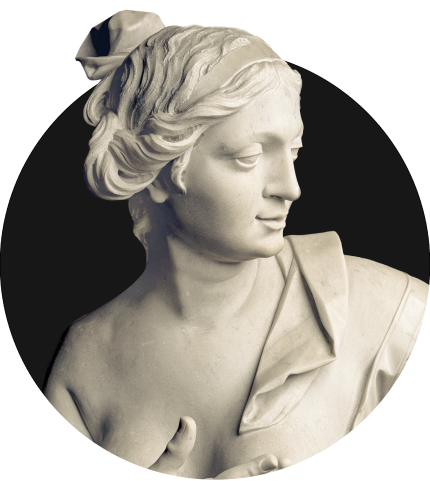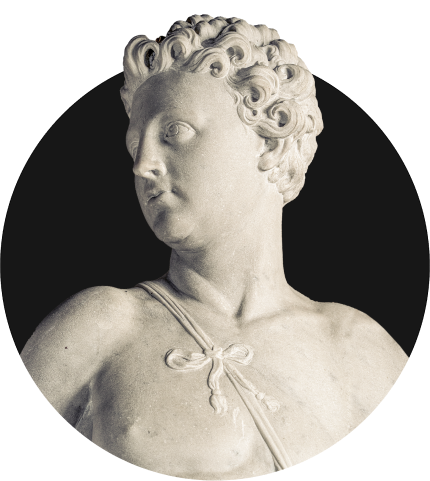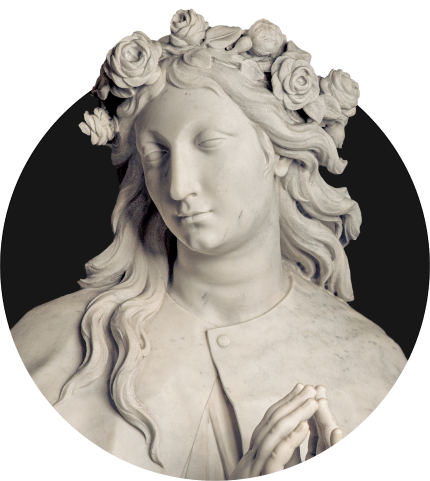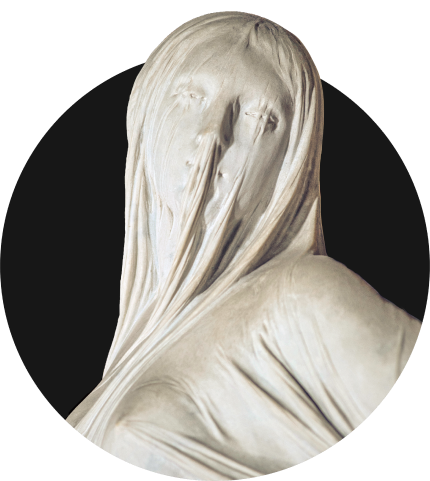
The statues
Disillusion
The statues
Disillusion
Queirolo’s masterwork is without question Disillusion, dedicated by Raimondo di Sangro to his father Antonio, Duke of Torremaggiore. After the premature death of his wife, Antonio led an eventful and disordered life, entrusting his son to the care of his grandfather Paolo. “Enslaved – as the plaque states – to youthful passions”, the Duke travelled throughout Europe, but in his old age, now tired and repentant of his errors, he returned to Naples, where he spent his last years in the tranquillity of the priestly life.
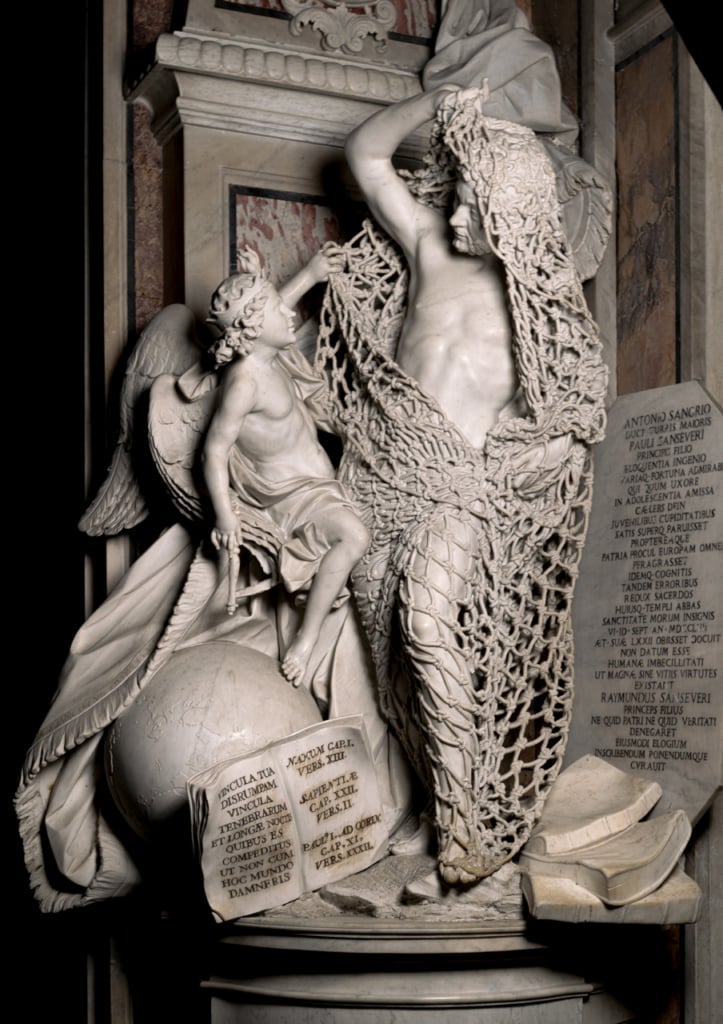
The group of statues
The group of sculptures describes a man who has been set free of sin, represented by the net into which the Genoese artist put all his extraordinary skill. A little winged spirit, with a small flame on his forehead, a symbol of human intellect, helps the man to free himself from the intricate netting, while pointing to the globe at his feet, symbol of worldly passions. An open book rests on the globe; it is the Bible, a sacred text, but also one of the three “great lights” of Masonry.
The bas-relief on the pedestal, with the story of Jesus restoring sight to the blind, accompanies and strengthens the meaning of the allegory.

The last and most trying test to which sculpture in marble can aspire
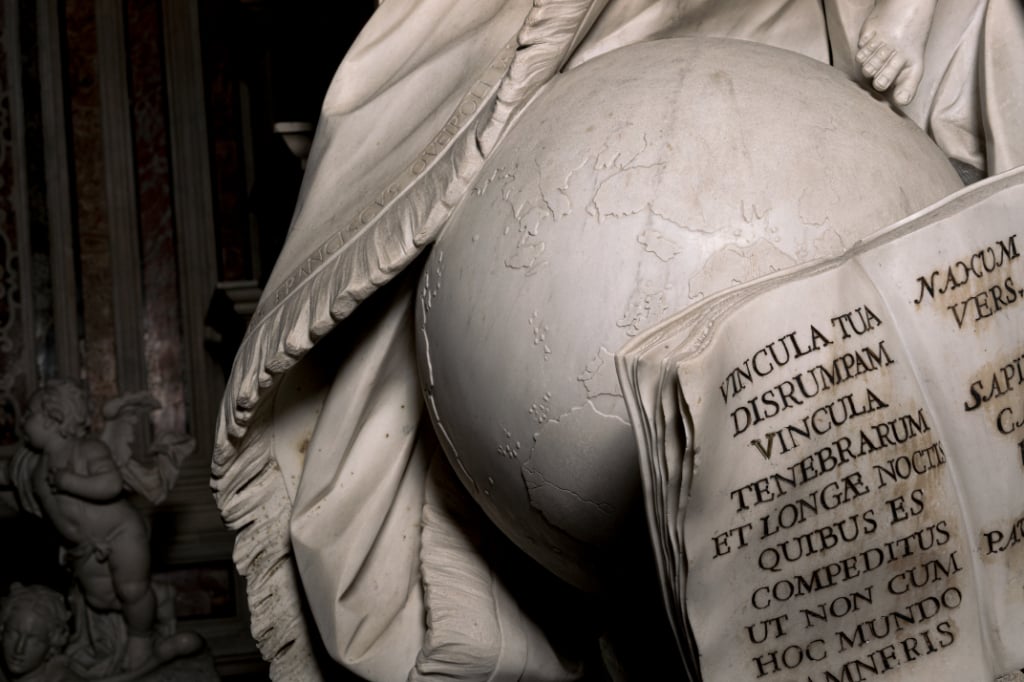
In his Istoria dello Studio di Napoli (1753-54), Giangiuseppe Origlia rightly defines this statue as “the last and most trying test to which sculpture in marble can aspire”. The reference is naturally to the virtuoso work on the net, which amazed famous eighteenth- and nineteenth-century travellers, and continues to astound tourists today. In this regard, the story goes that – as had already happened to Queirolo years before, when he was working on another statue – the sculptor had to burnish the sculpture with pumice personally, as the craftsmen of the period, though specialised in the burnishing phase, refused to touch the delicate net lest it should shatter into fragments in their hands.
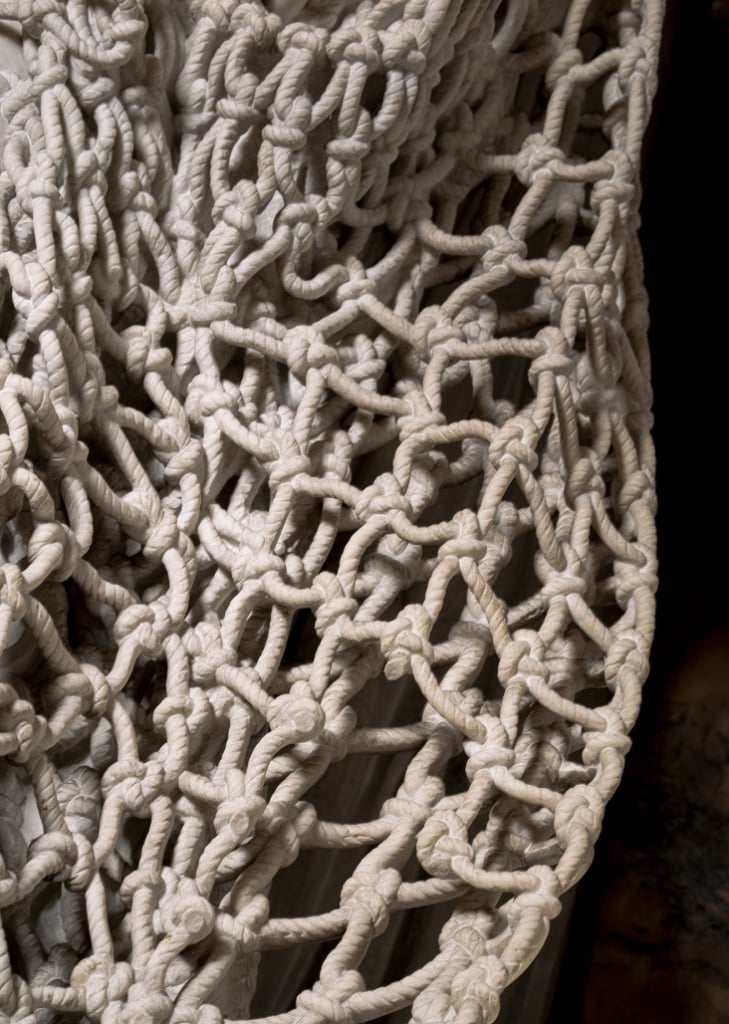
The meaning of the work
Disillusion, as Origlia goes on to say, is a work “solely of the Prince’s invention, and is entirely new of its kind”, as nothing similar was to be found in either ancient or modern art. This monument has, and not by mere chance, a rich and complex symbology. The reference to the contrast between light and darkness, evoked by the main allegory as well as the bas-relief (with the phrase “Qui non vident videant”) and Biblical passages engraved in the open book, appears to be a clear reference to Masonic initiation, where those being initiated would enter wearing a ritual blindfold to open their eyes to the new light of the Truth kept by the Lodge. Raimondo’s dedication is truly beautiful: the life of his father is used as an immortal example of “human fragility, which cannot know great virtues without vice”.
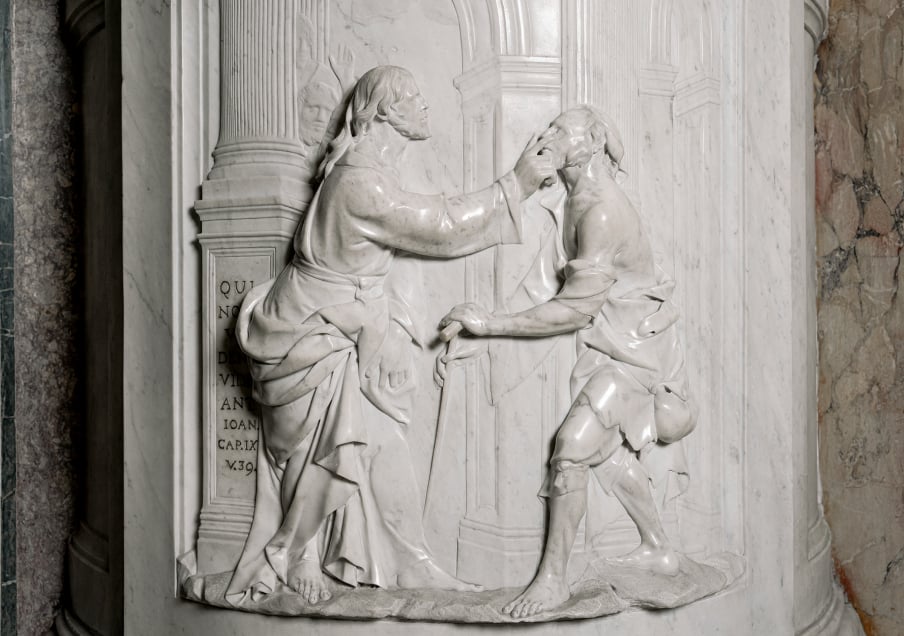
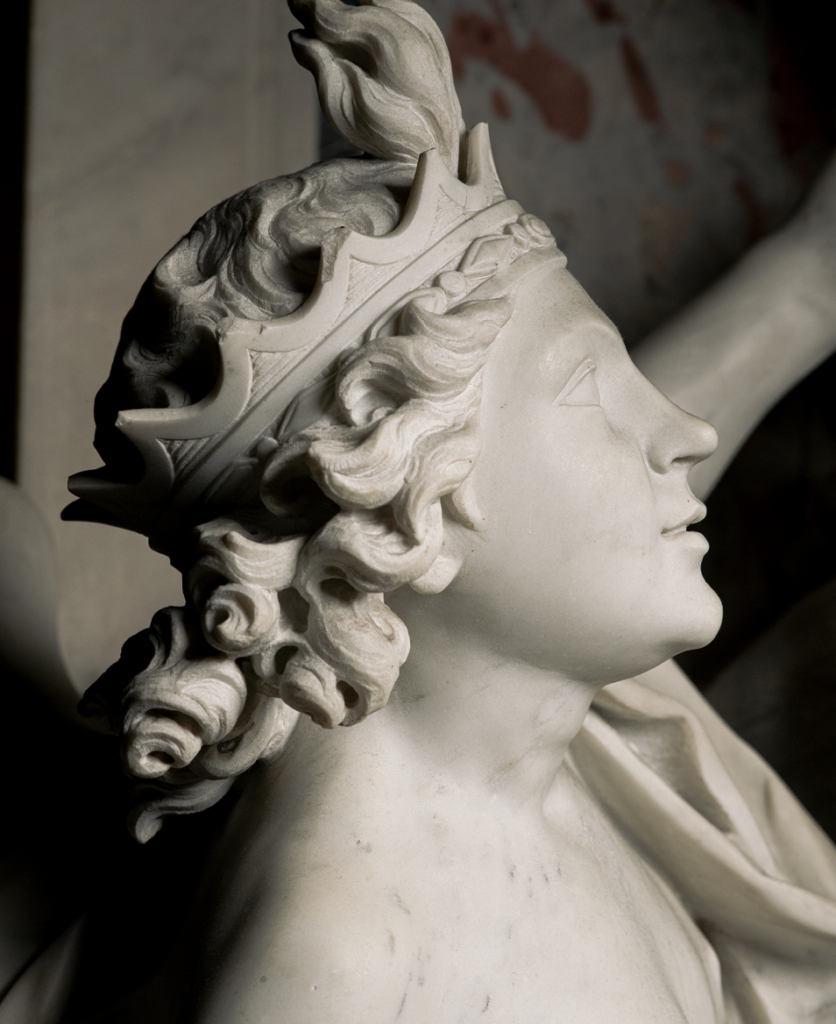
Gallery
Map
- High altar
- The monument to Alessandro di Sangro
- Modesty
- Saint Rosalia
- The sweetness of marital yoke
- Portrait of Vincenzo di Sangro
- Religious zeal
- Monument to Giovan Francesco
di Sangro, first Prince of Sansevero - Liberality
- Monument to Paolo di Sangro,
fourth prince - Decorum
- Monument to Giovan Francesco
di Sangro, third prince - Monument to Cecco di Sangro
- Monument to Giovan Francesco
di Sangro, fifth prince - The veiled Christ
- Glory of Heaven
- Disillusion
- Saint Oderisio
- Sincerity
- The tomb of Raimondo di Sangro
- The labyrinth floor
- Self-control
- Monument to Paolo di Sangro,
sixth prince - Education
- The anatomical machines
- Madonna and child
- Portrait of Raimondo di Sangro
- Monument to Paolo di Sangro,
second prince - Divine Love








